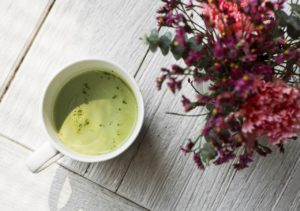No matter if you are new to kratom or an experienced user, you may have many questions about the herb. The plant is very new in the Western countries, so there is still too little (or biased) information about it. For this reason, sometimes it gets really hard to find reliable kratom information. In this article, we have compiled the most frequently asked questions about the plant. So, if you are looking for answers or you are just curious to know what people’s questions are, keep reading below to discover our kratom FAQS.
What is Kratom?
In a kratom FAQS compilation, this should be always the first question to answer. Mitragyna speciosa (kratom’s scientific name) is a tree from the coffee family that grows in the jungle regions of South East Asia.
The native people of the areas where kratom grows have been using the plant traditionally for many purposes. But, possibly, the most popular use in its native regions is to achieve energy, euphoria, and stimulation. In fact, the plant was mainly used by manual laborers to avoid getting too tired under their extremely demanding working conditions. To feel its effects, people used to chew the fresh leaves of the plant.
Where Does Kratom Come From?
As we just said, kratom comes from South East Asia. So, all the kratom available in the market comes from that area. Kratom is a native tree from Indonesia, Thailand, Borneo, Bali, Malaysia, and other Asian countries. However, most kratom supplies come from Indonesia.
Typically, kratom growers collect the leaves directly from the trees. Then, they leave them to dry and crush the leaves to produce a fine powder. This powder is then packed and shipped to its final destinations.
Since kratom requires specific environmental and growing conditions, all the kratom supplies are imported from their native areas. That’s why it is a pricey product.
Is Kratom Legal?
Kratom has different legal statuses in different countries and even within the US. Although some areas have banned the commercialization and use of the plant, it remains legal at the federal level. So, it is recommended to find out if the plant is legal where you live before purchasing. Nevertheless, most kratom vendors won’t send it to places where kratom has been made illegal.
On the other hand, there are areas where kratom’s laws have been passed. There is the so-called Kratom Consumer Protection Act.
You can follow kratom’s legal status on the American Kratom Association website.
What Are Kratom’s Alkaloids?
Like any other natural herb, kratom’s owes its properties to its active ingredients. The kratom leaves are full of alkaloids and other compounds. The two main kratom alkaloids are called Mitragynine and 7-hydroxymitragynine.
The above alkaloids work together with the rest of the kratom ingredients to promote relaxation, analgesia, stimulation and other effects. It is believed that they act upon the opioid receptors of the brain and the rest of the system. That’s why kratom’s effects are similar to those of opioids.
What Are Kratom’s Effects?
The kratom leaves contain many alkaloids with many different properties. Depending on the alkaloid concentration and the dosage taken, kratom will have one or more of the following effects:
- pain relief
- anxiety and stress relief
- euphoria
- stimulation and energy
At the same time, many individuals who want to kick off their opioid consumption are turning to kratom to help them overcome the side effects of opiate withdrawal.
Regarding kratom’s effects, it is very important to know that different doses can have opposite effects. So, remember that low doses tend to be more stimulating and energizing, whilst higher doses are calming and can even be sedating.
What Are Kratom’s Side Effects?
Like any other plant, kratom can have side effects, especially at too high doses. The most common side effects may include:
- dizziness
- nausea
- stomach upset
- constipation
- dehydration
To prevent kratom’s side effects, keep your dose to a minimum and don’t overdo it. This will also help you to prevent developing tolerance. Additionally, if you experience any unpleasant effects, consider switching strains and, if this doesn’t work, consider quitting kratom altogether.

What Is a Kratom Strain?
Another common term regarding kratom is “strain”. This is a term that refers to the type or variety of kratom. There are three main kratom types: white, red and green vein kratom. Although you may have heard of yellow or golden kratom, these are typically subvarieties of the main kratom types.
At the same time, each kratom color is divided into the so-called “strains”. These would be the specific variety of kratom within the color. For instance, you can find Red Thai, Green Bali, White Maeng Da, etc. Typically, the strain refers to the region where the particular type comes from.
What Are the Differences Between Kratom Colors?
This is also one of the top kratom FAQs. So, now that we know that there are three main kratom colors, what’s the difference between them? Typically, each color has its own peculiarities and onset of effects:
- White kratom is the most energizing and stimulating
- Red kratom is the most calming
- Green kratom has properties of the other two and tends to be less potent
However, consider that each color subtype (strain) will have its own properties, so it is recommended to research before you buy.
How to Dose Kratom?
Another common kratom FAQs refer to kratom dosing. Dosing kratom is not an easy task since every person is different and reacts differently to the plant. On the other hand, there is still not enough research on kratom to determine a “one size fits all” dose that will work on everyone.
So, considering the above, there is a general recommendation that you can follow to dose kratom: Start always on a low dose, and start increasing it over time until you find the desired effects.
Also, consider the following measures:
- starting dose: 1-3gr
- low dose: 2-4gr
- moderate dose: 4-5gr
- high dose: 5-8gr
- very high dose: above 8gr (not recommended)
Moreover, consider that the above refers to plain leaf powder. If you use extracts or enhanced kratom you will need to adjust the dose accordingly.
How to Use Kratom?
There are various common kratom consumption methods. The most popular are:
- Toss and wash. It consists of scoping your kratom powder into your mouth and washing it down with water. It is not recommended for newbies.
- Kratom tea. This consists of mixing your kratom powder with hot water until it dissolves (consider that it won’t dissolve completely).
- Ingesting kratom capsules. Although you can find capsules in the market, it is recommended to make your own. This way you’ll be able to keep your dosage straight.
- Chewing kratom fresh leaves. This is the traditional method of consumption. However, it is not popular in Western countries due to the lack of access of people to fresh kratom leaves.
As you’ve seen, all of the above consumption methods involve ingesting kratom. It is believed that the alkaloids are absorbed better through the stomach. So, you should avoid smoking, snorting or injecting kratom. Consuming it in these fashions won’t only not be effective but it could be dangerous.
Where to Buy Kratom?
Kratom is sold in headshops and online. If you are considering buying kratom for the first time, it is highly recommended to do some research and don’t let yourself get blinded by the price. Look for online reviews, check the vendor’s policies, and find out if they have any ways of contact.
Finally, we would like to know about you. Do you have any questions that you would like us to include in our kratom FAQS? Let us know in the comment section below!


